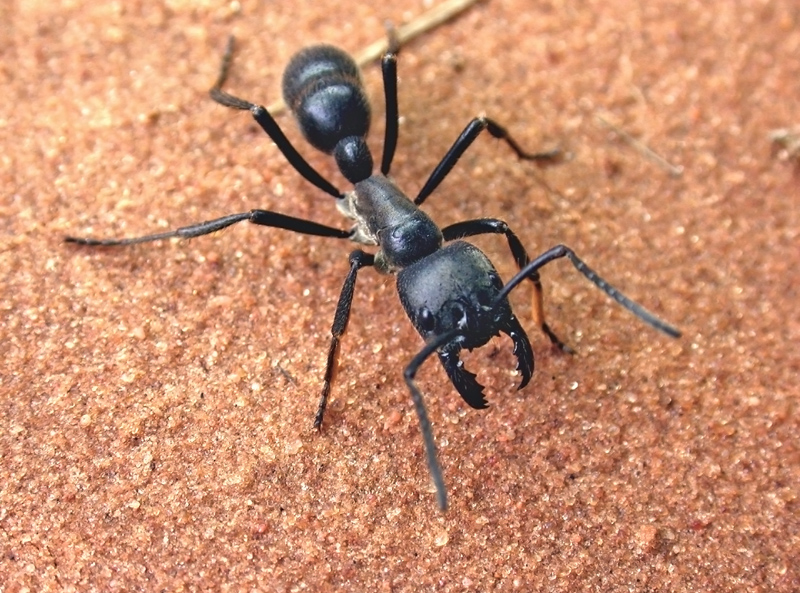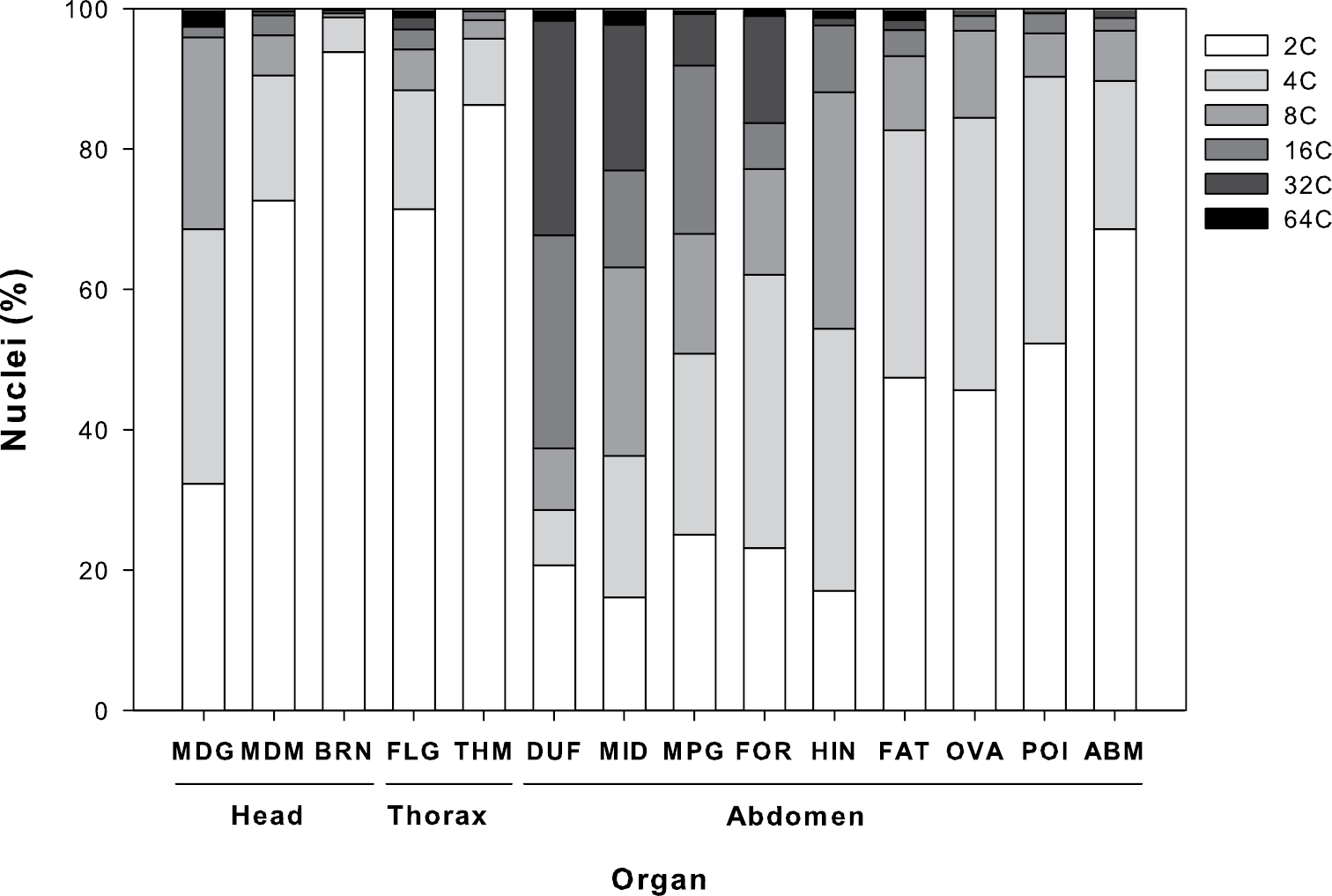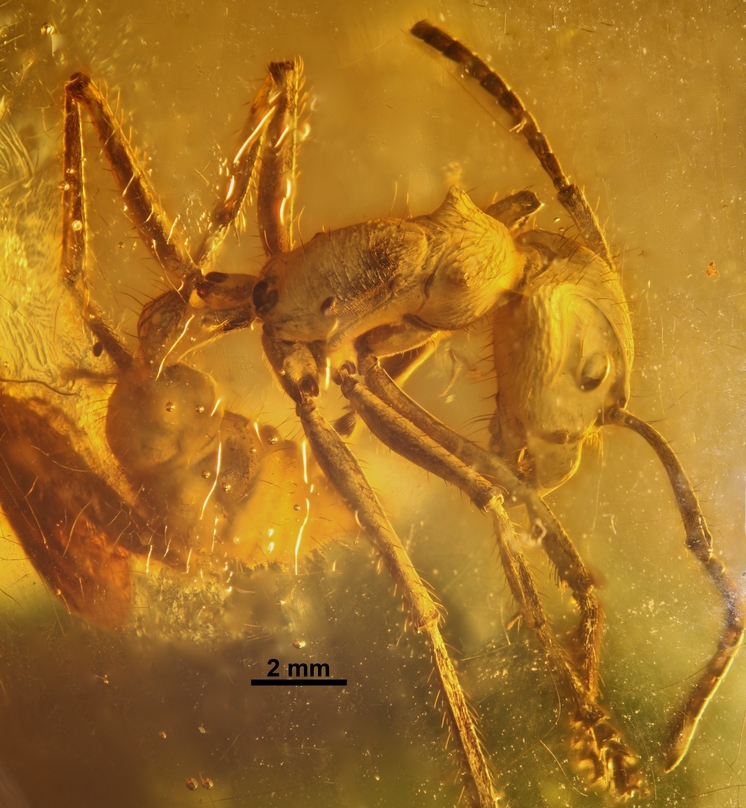|
Dinoponera
''Dinoponera'' is a strictly South American genus of ant in the subfamily Ponerinae, commonly called tocandiras or giant Amazonian ants. These ants are generally less well known than ''Paraponera clavata'', the bullet ant, yet ''Dinoponera'' females may surpass in total body length, making them among the largest ants in the world. Names ''Dinoponera'' (tocandira ants) are known as piata in many Tucanoan languages. Species * ''Dinoponera australis'' Emery, 1901 * ''Dinoponera hispida'' Lenhart, Dash & Mackay, 2013 * ''Dinoponera gigantea'' Perty, 1833 * ''Dinoponera longipes'' Emery, 1901 * ''Dinoponera lucida'' Emery, 1901 * ''Dinoponera mutica'' Emery, 1901 * ''Dinoponera quadriceps'' Kempf, 1971 * ''Dinoponera snellingi'' Lenhart, Dash & Mackay, 2013 Distribution ''Dinoponera'' is a strictly South American genus, and has been found from montane rainforest on the eastern slope of the Andes in Peru, Ecuador and Colombia to savannah and lowland rainforest in Brazil, Guyana, s ... [...More Info...] [...Related Items...] OR: [Wikipedia] [Google] [Baidu] |
Dinoponera Quadriceps
''Dinoponera quadriceps'' is a queenless species of ants in the subfamily Ponerinae. The species, known from Brazil, is similar to ''Dinoponera mutica'' and uses venom for subduing large live prey and defense. Its venom could be of use to the pharmaceutical industry. Distribution ''Dinoponera quadriceps'' is found in the Caatingas, Cerrados, upland humid forest and Atlantic forest in the northeastern Brazilian states of Alagoas, Bahia, Ceará, Paraiba, Pernambuco and Rio Grande do Norte. Of all ''Dinoponera'', ''Dinoponera quadriceps'' has the largest colonies with an average of 80 workers (range 26–238). ''Dinoponera quadriceps'' usually nest at the base of trees. Observations of ''Dinoponera quadriceps'' nests show that in more arid Caatinga and Cerrado habitats, nests are predominantly constructed under trees, whereas in Atlantic forest 60% of nests were 3 m away from any tree. Nests are deeper in ''Dinoponera quadriceps'' (and ''Dinoponera australis'') than in ''Dinoponer ... [...More Info...] [...Related Items...] OR: [Wikipedia] [Google] [Baidu] |
Dinoponera Lucida
''Dinoponera lucida'' is a large queenless species of ant in the subfamily Ponerinae. The species, endemic to Brazil, is threatened by habitat destruction. Workers range from 27 to 30 mm in body length, which is slightly larger than the related species ''Dinoponera australis'', but smaller than other large ants. Males are unknown. Distribution ''Dinoponera lucida'' inhabits fragments of Atlantic rainforest in the Brazilian state of Espirito Santo, across the border into Minas Gerais, the southern portion of Bahia and São Paulo. It is possible that ''D. lucida'' exists in Rio de Janeiro. With the locality data available ''Dinoponera lucida'' is the only species with no known range overlaps with other ''Dinoponera'' species. ''Dinoponera lucida'' has been classified as vulnerable in Brazil by the Ministry of the Environment due to habitat destruction in the Atlantic forest. Taxonomy Lenhart, Dash & MacKay (2013) recognized ''Dinoponera lucida'' as a valid species based o ... [...More Info...] [...Related Items...] OR: [Wikipedia] [Google] [Baidu] |
Dinoponera Longipes
''Dinoponera longipes'' is a queenless species of ants in the subfamily Ponerinae. Distribution ''Dinoponera longipe''s have been collected in eastern Peru in the departments of Loreto, Amazonas, Huánuco, San Martín and Pasco, as well as Ecuador in the province of Pastaza. In Colombia it has been recorded near the Peruvian border in the department of Amazonas. In Brazil, ''Dinoponera longipes'' has been found in Acre, Amazonas as far east as Manaus, as well as along the Rio Madeira in Rondônia. Taxonomy Doubt was raised by Kempf (1971) as to whether ''Dinoponera longipes'' was a valid species. Since few specimens have been collected from western Brazil a clinal variation in character form with ''Dinoponera gigantea'' or ''Dinoponera mutica'' was a possibility. Specimens from Brazil examined by Lenhart, Dash & MacKay (2013) showed no such integration. Additionally, evidence of species validity comes from the unique morphology of the male. The nearest known locality of ano ... [...More Info...] [...Related Items...] OR: [Wikipedia] [Google] [Baidu] |
Dinoponera Australis
''Dinoponera australis'' is a species of ant notable for its lack of distinct queen caste. Subspecies ''Dinoponera australis'' is divided into three subspecies: * ''Dinoponera australis australis'' Emery, 1901 * ''Dinoponera australis bucki'' Borgmeier, 1937 * ''Dinoponera australis nigricolor'' Borgmeier, 1937 Description Studies have shown that fat storage in this species is related to the division of labour in the colony and non-reproductive individuals are characterized with a lower lipid count than reproductives. ''Dinoponera australis'' has been found to exhibit marked differences in the degree of polyploidy across its tissues, ranging from 2 to 64 copies of the nuclear genome. Distribution ''Dinoponera australis'' has the widest known range of the ''Dinoponera''. This species is found in the department of Santa Cruz in Bolivia, southern Brazil in the states of Mato Grosso, Goiás, Minas Gerais, São Paulo, Mato Grosso do Sul, Paraná, Santa Catarina and Rio G ... [...More Info...] [...Related Items...] OR: [Wikipedia] [Google] [Baidu] |
Dinoponera Mutica
''Dinoponera mutica'' is a queenless species of ants in the subfamily Ponerinae. Description ''Dinoponera mutica'' workers can be identified by their smooth and shiny integument with a bluish luster, a rounded pronotal corner lacking a tooth-like process, gular striations on the ventral surface of the head, long and flagellate pubescence, scape length longer than head width and petiole with even dorsal corners. Males are unknown. Distribution ''Dinoponera mutica'' is found in central South America in the Brazilian states of Rondônia, Mato Grosso, Goias and Mato Grosso do Sul, in eastern Bolivia and northwest Paraguay. Taxonomy ''Dinoponera quadriceps'' is the species closest to ''Dinoponera mutica'' in terms of morphological characters. ''Dinoponera quadriceps'' has a finely micro-sculptured integument which is not shiny, lacks gular striations and has a petiole which bulges on the dorso-anterior edge. ''Dinoponera longipes'' and ''Dinoponera hispida'' may also be confused ... [...More Info...] [...Related Items...] OR: [Wikipedia] [Google] [Baidu] |
Dinoponera Gigantea
''Dinoponera gigantea'' is a species of ant belonging to the family Formicidae. Names It is called taramãçu or uitsi in the Kwaza language of Rondônia, Brazil. Description ''Dinoponera gigantea'' is one of the world's largest species of ant. The females of the species are larger than males, with lengths ranging from . The females are coal-black in color, while the much smaller males are dark red. Distribution ''Dinoponera gigantea'' is present only in South America. It has been found on the coast of Guyana, in the Brazilian states of Amazonas, Pará including Marajo Island, Mato Grosso, Mato Grosso do Sul and Maranhão as well as the Loreto Province in Peru. ''Dinoponera gigantea'' is reported to be common in un-flooded forests in the vicinity of Belém, Pará. It is probable that ''Dinoponera gigantea'' is found in French Guiana, Suriname, Venezuela and southeastern Colombia because these regions are adjacent to known ''Dinoponera gigantea'' localities and have similar l ... [...More Info...] [...Related Items...] OR: [Wikipedia] [Google] [Baidu] |
Dinoponera Hispida
''Dinoponera hispida'' (''hispida'', from the Latin ''hispidus'': bristle, referring to the conspicuous bristle-like setae covering the body) is a queenless species of ants in the subfamily Ponerinae. The species is known only from the type locality in Tucuruí, Pará, Brazil Brazil ( pt, Brasil; ), officially the Federative Republic of Brazil (Portuguese: ), is the largest country in both South America and Latin America. At and with over 217 million people, Brazil is the world's fifth-largest country by area .... Description Workers can be distinguished from other species by the following combination of character states: conspicuous bristle-like setae covering the entire body but most pronounced on the dorsum of the head, mesosoma, petiole and gaster; fine striations on dorsum of the head; integument smooth and shiny with bluish luster most visible on sides of the head; antero–inferior corner of pronotum without tooth-like process; petiole bulging at antero-dor ... [...More Info...] [...Related Items...] OR: [Wikipedia] [Google] [Baidu] |
Dinoponera Snellingi
''Dinoponera snellingi'' (named after Roy Snelling) is a queenless species of ants in the subfamily Ponerinae. The species is known only from type locality in Campo Grande, Brazil. Description Workers are unknown. Male specimens of this species are distinct in several respects. The combination of a bicolored body and head possessing bulging compound eyes and ocelli is unique to this species. More definitive is the shape of the aedeagus which possesses a large ventral lobe and finger-like serrated flange. The short broad digitus volsellaris with finely toothed basal lobe is distinctive, as well as the paramere Parameres ('side parts') are part of the external reproductive organs of male insects and the term was first used by Karl Wilhelm Verhoeff, Verhoeff in 1893 for the lateral genital lobes in Coleoptera. The primary phallic lobes which appear in th ... shape. References * * Ponerinae Insects described in 2013 Hymenoptera of South America {{Ponerinae-stub ... [...More Info...] [...Related Items...] OR: [Wikipedia] [Google] [Baidu] |
Ponerinae
Ponerinae is a subfamily of ants in the Poneromorph subfamilies group, with about 1,600 species in 47 extant genera, including ''Dinoponera gigantea'' - one of the world's largest species of ant. Mated workers have replaced the queen as the functional egg-layers in several species of ponerine ants. In such queenless species, the reproductive status of workers can only be determined through ovarian dissections. Description and identification They are most easily identified from other subfamilies by possessing a single-node petiole with a constriction before the second gastral segment. They are rare examples of stinging ants. In addition to the sting, they can also be characterized by a single segmented petiole and the constriction of the first and second segment of the gaster. They can also be identified by the shape of their head. Female workers have twelve segmented antennae, whereas male workers have 13 segmented antennae. Behavior These ants typically nest in soil, for ... [...More Info...] [...Related Items...] OR: [Wikipedia] [Google] [Baidu] |
Paraponera Clavata
''Paraponera clavata'' is a species of ant, commonly known as the bullet ant, named for its extremely painful sting. It inhabits humid lowland rainforests in Central and South America. Etymology The specific epithet of the ant, ', means "club-shaped". The generic name, ''Paraponera'', translates to "near-''Ponera''". Due to its notoriety, the ant has several Native American, Spanish, and Portuguese local names in different geographical areas. Perhaps the best known name is the Venezuelan ' (the "24 ant" or "24-hour ant"), referring to the full day of pain that follows being stung; it can also refer to the time it takes to kill a human. In Brazil, the Portuguese names given by locals include ', ', or ' (big black ant), and Native American-derived names are ''tocandira'', ''tocandira'', and ''tocanquibira''. These names derive from the Tupi–Guarani ''tuca-ndy'', which translates to "the one wounding deeply". Other names by which it is referred include ''chacha'', ''cumanagata ... [...More Info...] [...Related Items...] OR: [Wikipedia] [Google] [Baidu] |
Ponerini
Ponerini is a tribe of Ponerinae ants with 46 genera and 6 extinct genera. Genera *''Anochetus'' *†'' Archiponera'' *''Asphinctopone'' *''Austroponera'' *''Belonopelta'' *''Boloponera'' *''Bothroponera'' *''Brachyponera'' *''Buniapone'' *''Centromyrmex'' *†''Cephalopone'' *''Cryptopone'' *†'' Cyrtopone'' *''Diacamma'' *''Dinoponera'' *''Dolioponera'' *''Ectomomyrmex'' *'' Emeryopone'' *'' Euponera'' *''Feroponera'' *''Fisheropone'' *''Hagensia'' *''Harpegnathos'' *''Hypoponera'' *''Iroponera'' *''Leptogenys'' *''Loboponera'' *''Mayaponera'' *''Megaponera'' *''Mesoponera'' *†'' Messelepone'' *''Myopias'' *''Neoponera'' *''Odontomachus'' *'' Odontoponera'' *''Ophthalmopone'' *''Pachycondyla'' *''Paltothyreus'' *'' Parvaponera'' *''Phrynoponera'' *'' Plectroctena'' *''Ponera'' *†'' Ponerites'' *'' Promyopias'' *†'' Protopone'' *'' Psalidomyrmex'' *'' Pseudoneoponera'' *'' Pseudoponera'' *'' Rasopone'' *'' Simopelta'' *'' ... [...More Info...] [...Related Items...] OR: [Wikipedia] [Google] [Baidu] |
Ecuador
Ecuador ( ; ; Quechua: ''Ikwayur''; Shuar: ''Ecuador'' or ''Ekuatur''), officially the Republic of Ecuador ( es, República del Ecuador, which literally translates as "Republic of the Equator"; Quechua: ''Ikwadur Ripuwlika''; Shuar: ''Ekuatur Nunka''), is a country in northwestern South America, bordered by Colombia on the north, Peru on the east and south, and the Pacific Ocean on the west. Ecuador also includes the Galápagos Islands in the Pacific, about west of the mainland. The country's capital and largest city is Quito. The territories of modern-day Ecuador were once home to a variety of Indigenous groups that were gradually incorporated into the Inca Empire during the 15th century. The territory was colonized by Spain during the 16th century, achieving independence in 1820 as part of Gran Colombia, from which it emerged as its own sovereign state in 1830. The legacy of both empires is reflected in Ecuador's ethnically diverse population, with most of its mill ... [...More Info...] [...Related Items...] OR: [Wikipedia] [Google] [Baidu] |




